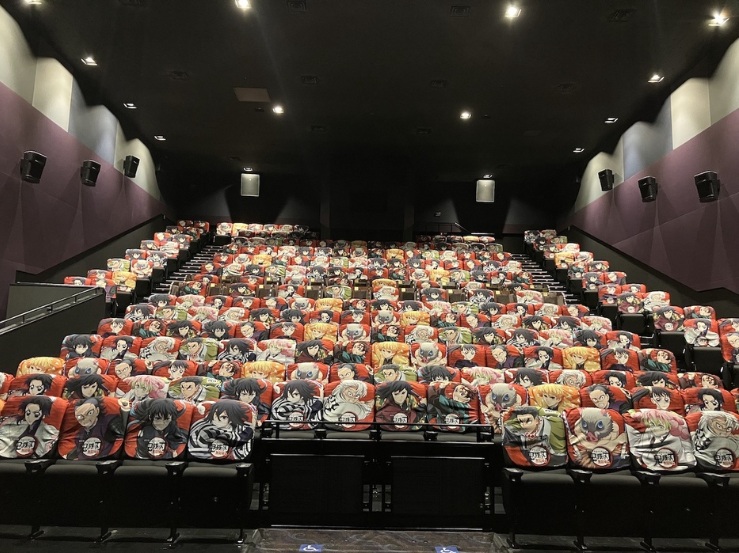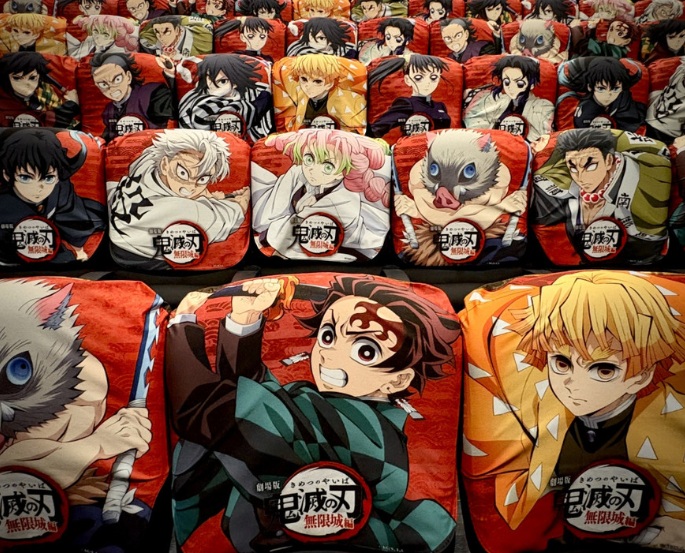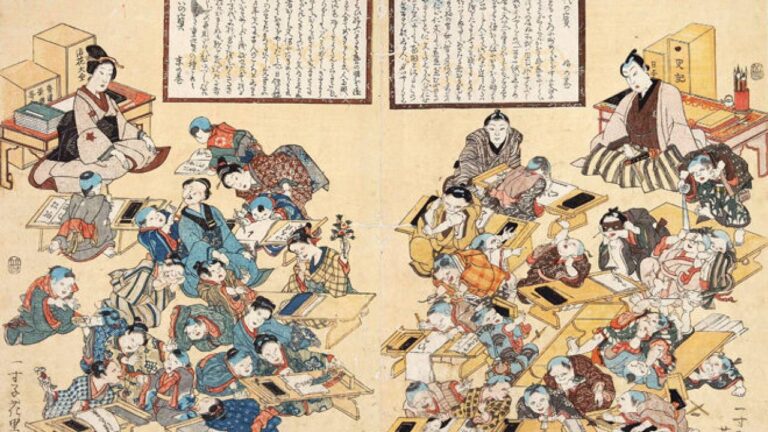Demon Slayer: Mugen Castle Arc — The Beginning of the End
©Koyoharu Gotouge/Shueisha, Aniplex, ufotable
When Demon Slayer’s newest arc was announced as a theatrical release, most fans—including myself—assumed it was just another movie before the next season aired on TV.
We were wrong.
The Mugen Castle Arc isn’t just a continuation. It’s the beginning of a three-part finale that won’t be airing on television. If you want to witness how the story ends, you’ll have to follow it to the theater.
But that’s not the only reason why Japanese fans have been flocking to cinemas—again and again. Something very different is happening here.
No More TV Episodes—This Is the Final Chapter
Let’s be clear: there will be no more seasonal anime series.
The story will wrap up across three theatrical films, starting with the Mugen Castle Arc.
That means watching it later on streaming services may eventually become possible, but there are no plans for a TV broadcast. The official message is clear:
“If you want to see how it ends, come to the theater.”
This changes everything. It’s no longer about casually keeping up with a popular series.
This is about showing up—to witness, to support, and to say goodbye.
People Aren’t Just Watching It—They’re Living It
From schoolkids to office workers, Japanese theaters are filled with all kinds of people coming to see the movie—often more than once.
Online, you’ll find posts from people taking paid leave just to go, or from fans trying to emotionally recover after a second or third viewing.
“I couldn’t handle it the first time—emotionally wrecked.”
“I missed too many lines while crying. Going again.”
“Third time’s the charm. This time, I’m bringing a towel.”
Multiple viewings aren’t just common—they’re expected.
It’s part of a growing culture where watching once simply isn’t enough.
The Theater Becomes a Battlefield—Literally
In some theaters, special “seat takeover” events were launched where every seat cover was printed with Demon Slayer characters.
Fans described it as sitting shoulder-to-shoulder with the Demon Slayer Corps, with their backs “protected” by their favorite Hashira.

“I felt like Rengoku was watching over me.”
“It’s not just a movie. It’s a ritual.”
“This isn’t cosplay, but I wanted to dress up out of respect.”
Photos of entire theaters transformed into Demon Slayer zones flooded social media.
It was no longer just a screening—it became an experience, shared and celebrated.

Why “Spending Money” Feels Like Love in Japanese Fandom
Before we talk about piracy, there’s something deeper behind it all.
In Japanese fandom, spending money isn’t just about access—it’s about affection.
For many fans here, how you support a story is part of loving it.
Whether it’s anime, manga, or stage plays, there’s an unspoken belief:
“If you really care, make sure the people behind it can keep creating.”
This mindset runs deep—especially when it comes to authors.
Even if a movie grosses billions of yen, the original creator might see only a tiny fraction of that.
That’s why fans think carefully: Where does the money go? What actually helps?
“If you want more of this world, let them know—with your ticket stub.”
“Box office numbers matter. So we show up.”
“We’re not just watching. We’re keeping this story alive.”
So no, it’s not about shaming anyone.
But for many Japanese fans, waiting and paying the official way feels like a way to say:
“We’re with you. Please keep going.”
Pirated Copies Appear Overseas. Japanese Fans… Sigh
Just weeks after the Japanese release, low-quality uploads started surfacing on overseas social media.
Some fans abroad expressed frustration. Others justified it with “I couldn’t wait.”

Meanwhile, in Japan, most fans didn’t lash out—they just sighed.
Not because they were angry, but because they’ve seen it happen before.
“This always happens.”
“It makes us look bad as a fandom.”
“What if theaters stop international screenings someday…?”
Of course, piracy exists in Japan too. No one’s perfect.
But there’s a quiet, shared hope:
that stories like this get the support they need—so they can continue.
Some fans even joke: “Maybe we’re being tested by our favorite characters.”
Not everyone will pass. But those who wait? They’ll know why it matters.
It’s not that every Japanese fan is a model citizen—piracy exists here too.
But there’s a strong cultural sense that being a fan means protecting the creator’s ability to keep creating.
And when that gets ignored, the worry isn’t just about morality.
It’s about what might happen next—delayed releases, restricted access, even “no foreigners allowed” screenings.
(Okay, that last one’s a joke… mostly.)
Two Months Isn’t That Long, Is It?
Japanese fans wait two, sometimes three months for Hollywood blockbusters.
They queue, they avoid spoilers, and when it’s finally time—they show up.
So when international fans ask, “Why do we have to wait for Demon Slayer?”
Well… maybe this time, it’s your turn to wait.
And if you truly love it, you’ll know what to do.
Because supporting a story means more than just watching it—it means choosing how you watch it.
You might also be interested in these articles
■Why Japanese Manga Captivates Adults Around the World

Born in Japan, raised in Toronto. I dive deep into anime, pop culture, and history — bringing both otaku vibes and global views.







